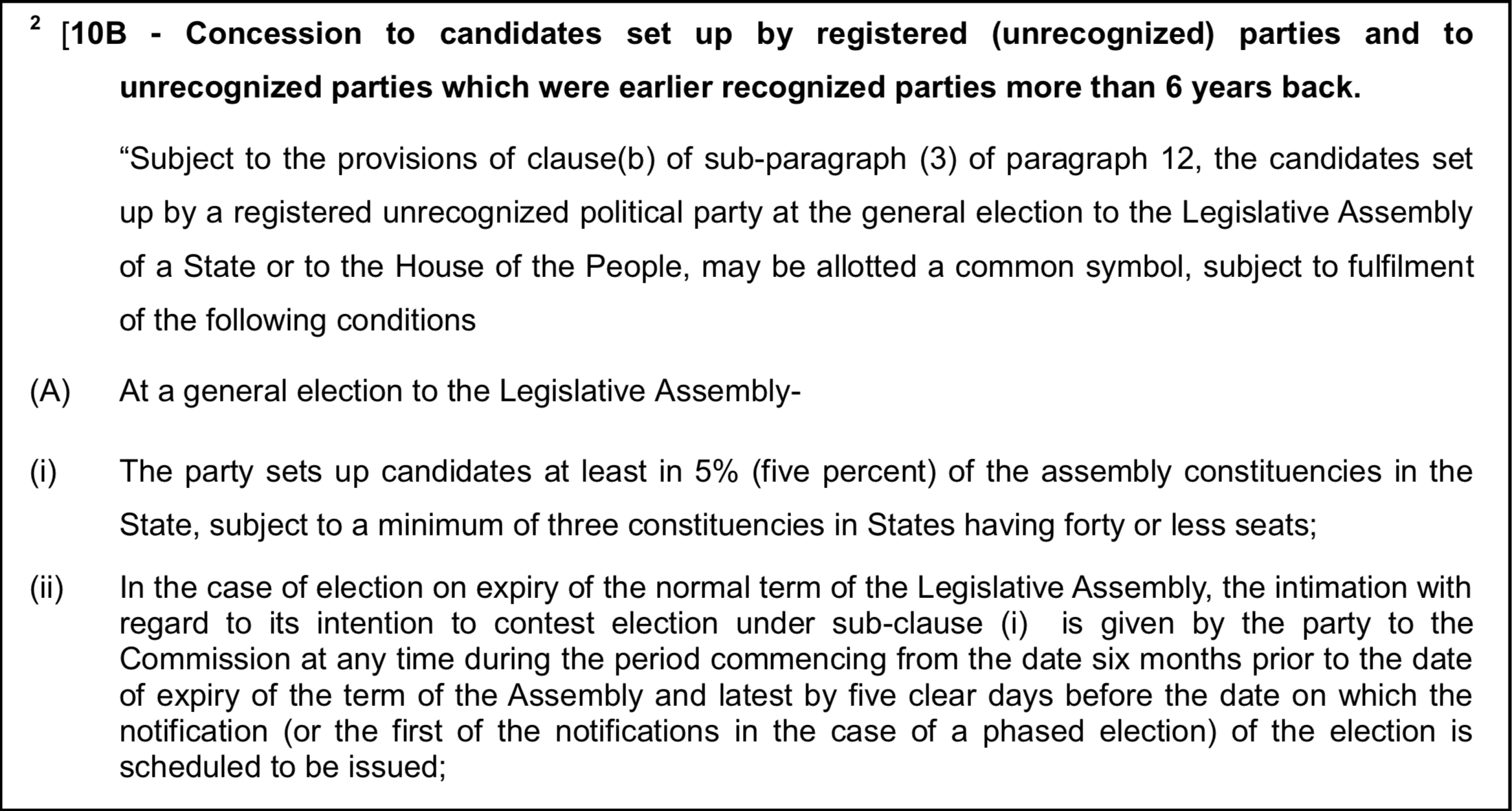What is rule behind the order of names of contesting candidates on the EVM? Whose name comes first?
The role played by the symbol in Indian electoral politics is well known. Often, people vote for the symbol of the party without even knowing the credentials or the details of the contesting candidate. Most people remember political parties with their symbols like BJP ka Kamal or Congress ka Haath. But what about new political parties? Can they get a symbol of their choice to contest elections? This issue becomes important when hundreds of new political parties get registered during an election year.
The Recognized parties
A registered political party can attain recognition as a State party or a National party provided it fulfills the criteria listed in ‘The Election Symbols (Reservation and Allotment) Order, 1968’. Factly has extensively written about these criteria. As soon as a party is recognized as a State party in a particular state, they are entitled to a reserved symbol of their choice from the list of free symbols. This symbol can be used by all the candidates of that party in that particular state. In the case of a party recognized as a National party, the candidates put up by that party can use that symbol across the country. Currently, there are seven (7) recognized national parties and over fifty recognized state parties in various states.
What about new Political Parties?
In order to provide a fair chance to new political parties in terms of the symbol, a two time concession is provided to all the registered political parties. As per para 10B of the ‘The Election Symbols (Reservation and Allotment) Order, 1968’, a new registered political party may be allotted a common symbol in the case of a general election to a state assembly if it satisfies the following conditions
- The party sets up candidates in at least in 5% (five percent) of the assembly constituencies in the State, subject to a minimum of three (3) constituencies in States having forty or less seats.
- In the case of election on expiry of the normal term of the Legislative Assembly, the intimation about the intention to contest the election should be made during the period starting from six months prior to the date of expiry of the term of the Assembly and latest by five clear days before the date on which the notification of the election is scheduled to be issued.
- In the case of dissolution of the Legislative Assembly before the expiration of its normal term, the intimation should be given at any time from the date of dissolution of the Legislative Assembly and latest by five clear days before the date on which the notification of the election is scheduled to be issued.

In addition, the party is supposed to give a choice of 10 symbols in order of preference in a specified form. These 10 symbols could be chosen from the list of free symbols available with the Election Commission of India (ECI). The party could also propose three new symbols of their choice, with the names and clear design and drawings of symbol provided they have no resemblance to the existing reserved symbols or free symbols, nor shall have any religious or communal connotation or depict any bird or animal. But such a proposal has to be made at least three months before the date of expiry of the term of assembly. In the case of parties contesting Lok Sabha elections, similar rules exist for the allotment of a common symbol. The allotment of symbols is made on first-come-first- served basis. If two or more political parties apply at the same time and opt for the same symbol, then the allotment is decided based on draw of lots.
It has to be noted that parties have to provide an undertaking to the ECI that it shall contest in the minimum number of seats required for the common symbol and that it shall be liable for punitive action if they don’t contest such minimum number of seats. Such a concession would be available to new registered political parties twice. They could use it as per their preference. The concession will continue beyond two times in case they poll a minimum of 1% of the polled vote in the last general election.
What about the order of names on the EVM or Ballot Paper?
The order followed for the purpose of list of contesting candidates on the Electronic Voting Machine or the Ballot paper is the following. This is based on Section 38 of the Representation of the People Act, 1951.
- Candidates of recognised National & State political parties
- Candidates of registered political parties
- Other Candidates
Within each of these groups, names are arranged in alphabetical order.


